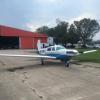Hangar Project - Oxygen Filling Setup
-
Members Online
- eman1200
- 00-Negative
- affricate
- TaildraggerPilot
- ta2too
- jetdriven
- Bike_rider
- BillyT0020
- Mooney squirrel
- N911TP
- Greg_D
- Crawfish
- JohnnyJ
- ad5ut
- Flyler
- jgarrison
- IvanP
- PeteMc
- MikeOH
- Aaviationist
- 201Mooniac
- toto
- FlySafe
- OR75
- Fritz1
- DonMuncy
- TCC
- Scott Ashton
- Aerodon
- Rmnpilot
- 1967 427
- kortopates
- Jarerh
- Dick Denenny
- DCarlton
- pistolparts162
- EricJ


Recommended Posts